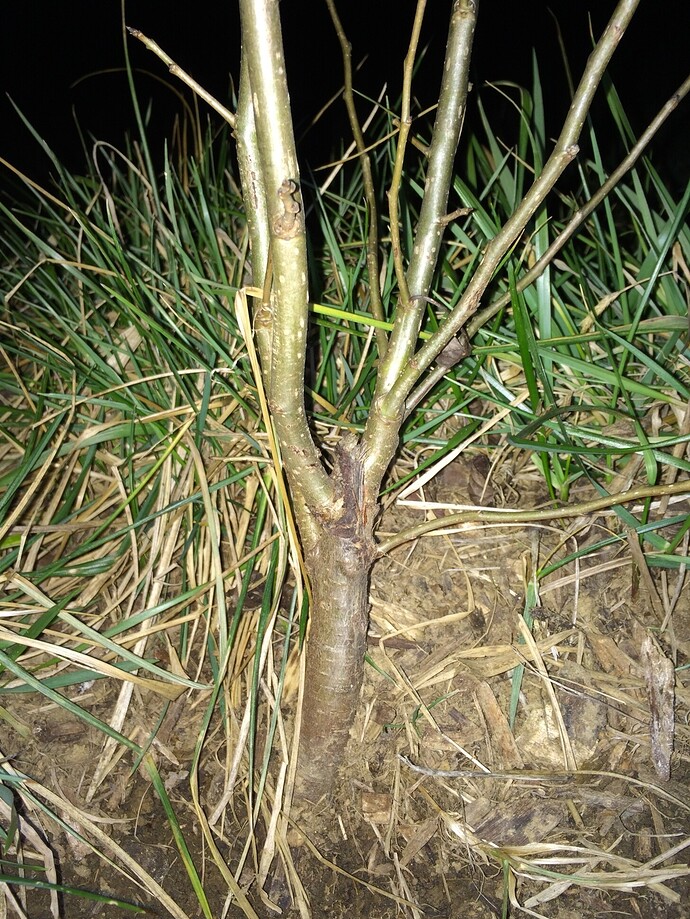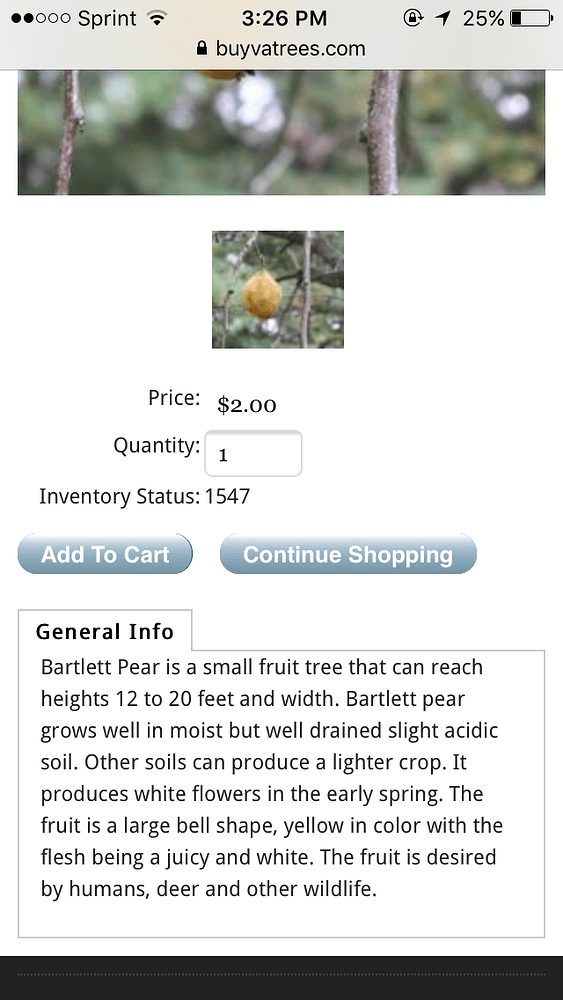If you have scion wood available I would graft it now.
Thanks, Auburn, I have loppers and a small hand saw… Should I just choose the largest main trunk and remove the rest? Thanks so much for the help! Any way to discourage those areas where I cut to keep from getting revenge on me by sprouting tenfold at those spots?  Do I just keep cutting them back as hey show up? I might email my friend to see if she has pruned recently, and I don’t recall her pear varieties, but otherwise, I don’t have access to any scions. Maybe it’d still be good to prune the tree for when I find some, even if I have to wait until next winter?
Do I just keep cutting them back as hey show up? I might email my friend to see if she has pruned recently, and I don’t recall her pear varieties, but otherwise, I don’t have access to any scions. Maybe it’d still be good to prune the tree for when I find some, even if I have to wait until next winter?
That looks like a great tree to graft. Those above are experts and it probably would make the most sense to remove those smaller trunks, but another option -especially if you are doubtful of your grafting abilities- would be to do a graft (cleft I’d think) on all noth of those biggest trunks after you cut them off. Then you could graft some of those smaller limbs coming off the bottom. This also gives you the option of having more than one variety of pear growing off that same roo tstock.
AS for your question about stopping sprouts, I don’t think you can. And there will be lots of them. You need to just keep them cut back as your grafts take and start to grow. Eventually they should slow down.
From the look of that tree, if you don’t already have your scionwood it is likely too late (you have to collect it before it comes out of dormancy). But its possible there are still some fruiting pear trees in your area that are dormant. Different ones wake up at different times. If not, I may have some left I can send you. Good luck.
Thanks for the advice!! Ok. I may be too late. I do have these pear seedlings that I bought from the VA Dept of Forestry spring of 2014 (accidentally “coppiced” by my sweet husband’s mowing spring of 2016!) which are still dormant so maybe there’s a chance of some scionwood available around here. These saplings are supposedly Bartlett but they’re thorny, almost as thorny as these callery pears so I don’t know what to make of them or if they’ll ever give good fruit. I hate the thorns  .
.
Just found this with a quick google. They say luscious and moonglow are fb resistant. Any thoughts? http://maplevalleyorchards.com/Pages/ScionWood.aspx
Found another! Exciting! If any of these pear varieties seem most apt to bring success to a complete novice’s attempt, let me know! http://www.masonvilleorchard.com/scionwood.htm
http://www.masonvilleorchard.com/scionwood.htm
ClothAnnie,
This post will be worth reading Pear tree Fireblight research so you dont have to.
Looks like you are doing a lot of research, which is a good thing. To answer your question: yes, dormancy is important with the scionwood (the fruiting wood you want to graft ONTO your callery) but the rootstock (what you are grafting TOO- your callery pear in this case) should NOT be dormant. It should be about where yours looks to be, though warmer weather is preferred and probably should be waited for even if it means your callery will have leafed out a lot more).
To be clear, here is how it works: People usually collect their scion wood in late winter while it is fully dormant. Then they put in their fridge in baggies and damp paper (some do) and so on. Then they wait about 1-3 months until trees come out of dormancy and wake up and sprout leaves AND the temperature gets considerably warmer. (ideally, 70 degrees for 3 days). Then they take the still dormant scion wood out of fridge, graft it onto the non-dormant rootstok tree, and if all goes well by the time the scion wood wakes up and comes out of dormancy, the rootstock will have connected its cambium layer to that of the scion wood and in that way the rootstock can supply water and food to the scion and keep it alive until the two pieces can grow together better. (Cambium layer is the bright green layer just below the bark that is very thin. The goal of grafting is to connect both pieces cambium layers and let nature do the rest.
I hate to see you do all this work and use bartlett seedlings for your scion. Chances are you won’t end up with a tree much better than a plain callery. At least I think that is right, is it @clarkinks ?
If you haven’t found any scion wood soon, I will check and see if I have enough to send you some this year. There would be no charge if I have some. Next year you can find a tree in your area I’m sure. Good luck
@thecityman,
I did not cut any scion wood this year accept from my small yellow pear and one stick of citron de Carmes. Maybe I will wind up with some extra scion wood from grafting this year and can donate some. We had little dormancy this year and it rushed me on everything. That Bartlett seedling is not what I would use. I think the pears would not be very good.
Something just don’t sound right about a thorns on Bartlett but I could be wrong.
I’m sorry…I wasn’t clear. What I was asking you is whether or not you think her Bradford seedlings will create good fruiting trees. I just told her I hated to see her do all this work using bradford seedlings as scion because I thought it probably wouldn’t make much better tree for her (in terms of fruit) than callery. I was asking you to confirm if that is true or not? thanks
Notice she said they were Bartlett SEEDLINGS. I don’t think Bradford can cross with Barlett to make a seedling, but if it can that would explian thorns? Otherwise, maybe she is confusing Bartlett and Bradford? I’m surprised the state would be giving away Bartlett seedlings but they would certainly give away bradfords
I’m sorry for being unclear. I wasn’t saying is use the (supposed) Bartlett saplings that I got from the Va Dept of forestry as scionwood; I was just noticing hat they’re still apparently dormant to my untrained eye so maybe I’ll find some local good fruit pear trees still in dormancy. I did email my friend who I think would be surprised to hear of my grafting into callery rootstock. She has lovely espaliered pear trees and I wonder if any of hers are dormant and need pruning.
@ClothAnnie. I just looked through my stash of scions and the only pears I have remaining is two sticks of Ayers and four of Orient. If your interested in these I will be happy to send these to you to practice on. I would immediately remove those competing trucks and just let the larger one grow. The cuts are low and all you need to do is come by and rub off the new buds that will form at or near the cuts. Very easy if you stay on top of it and don’t let them grow unchecked for long periods of time. The sprouts will be less of a problem over time. Bill
Seedling Bartlett do have thorns just like wild callery do sometimes. BET, ohxf, etc. rootstocks also have thorns. My little yellow pear has thorns when it’s young and they are as nasty as a anything you’ve ever seen. Here is a pear seedling I’m not looking forward to grafting!
I was surprised by the thorns, myself! They were definitely sold as Bartlett but not sure if it said seedling or sapling if there’s a difference.
My guess would be seedling but I don’t really know
[quote=“ClothAnnie, post:96, topic:3490”]
They were definitely sold as Bartlett but not sure if it said seedling or sapling if there’s a difference.
[/quote]All sapling means is a young tree. It’s another way to say starter tree.
Looks like they are marketing it as an actual Bartlett. Lines of what is a Bartlett and a seedling Bartlett can sometimes get blurred but you might actually have a Bartlett. Clark I’m sure can clear this up.



